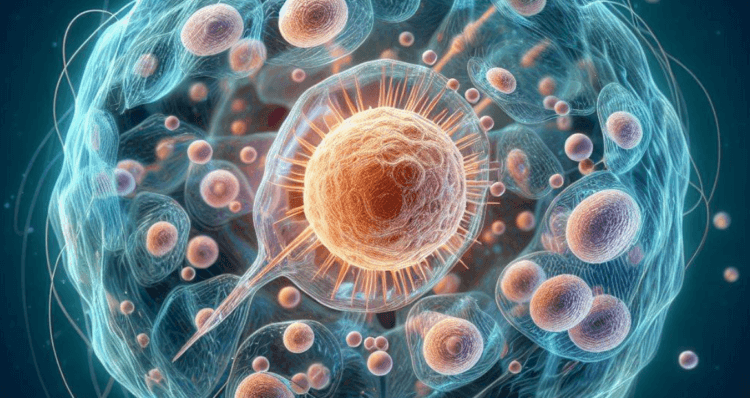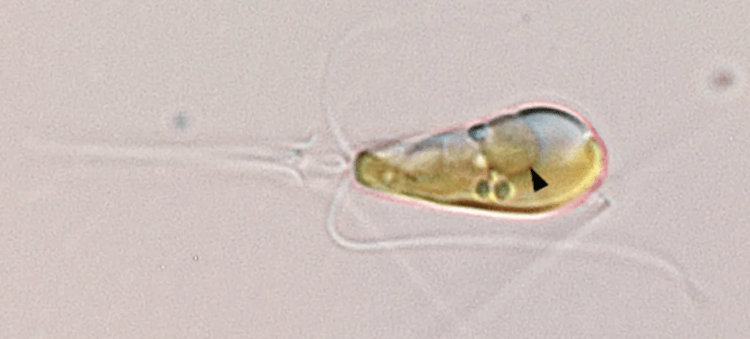Scientists have recorded an event that, according to them, has happened on Earth only three times. A marine prokaryotic bacterium was enclosed in another simple algae organism, after which the two organisms evolved so much that they can now be considered one single-celled organism (eukaryote) with a new organelle. Recall that eukaryotes are complex single-celled organisms with organelles whose DNA is located in a membrane-bound nucleus. Complex multicellular life evolved from these organisms. The fusion of two organisms into one is an incredibly rare event that occurs once every hundreds of millions or even billions of years.

Scientists have recorded the emergence of a new form of life, for the fourth time in the entire history of the Earth
Complex life arose from eukaryotes
Previously, we talked about how life on Earth to this day could remain in the form of the simplest single-celled prokaryotic organisms that do not have a membrane nucleus. However, evolution had a chance thanks to one random event – an ancient archaea absorbed a bacterium, and they began to evolve together. The result was complex single-celled organisms with organelles that were able to develop into multicellular organisms.
Thus, there is a huge difference between the earliest single-celled organisms (prokaryotes) and the later ones (eukaryotes) such as the ciliates. The latter, although they consist of one cell, are a complex organism. The first prokaryotes to evolve, according to scientists, were Asgardian microbes.
Life began again on Earth
Scientists have discovered a known structure in complex cells that absorbs nitrogen from the atmosphere and converts it into , which the cell can use for its life support. Scientists called this newfound part of the cell, that is, a new organelle, “nitroplast.” According to recent studies, nitroplast arose 100 million years ago.

A seaweed cell with a new organelle nitroplast (indicated by an arrow)
It has long been known that bacteria and algae live in symbiosis with each other. Microbes supply nitrogen in a form that the algae can absorb to support themselves. Algae, in turn, provide microbes with a home for life. However, research published in the journals Cell and Science showed that the microbe has taken on a new form, and is now an integral part of the cellular structure, in other words, an organelle that plays a key role in the metabolism of algae. Accordingly, the organelle replicates, that is, divides, together with the cell.
This discovery became the fourth known fact of “primary endosymbiosis” in the entire history of the Earth, that is, the transformation of a prokaryotic cell into a eukaryotic organelle. True, in this case, a prokaryote absorbed an organism that was already a eukaryote before this event, but now the cell has become even more complex.
Scientists first discovered that the bacterium UCYN-A, which became a nitroplast, has similar size ratios, as the host cell. This indicates that their metabolism is intertwined. The same size ratio is a characteristic feature of all organelles, including mitochondria and chloroplasts.

Algae cell division in place of the nitroplast organelle (highlighted in blue)
In another study, scientists found that UCYN-A imports proteins from the host cell, which is also a hallmark of organelle development. As scientists explain, bacteria inside the host cell begin to throw out pieces of their DNA, causing their genomes to become smaller and smaller. They therefore become dependent on the mother cell for protein transport.
The study found that many of the proteins that UCYN-A depends on to function properly are produced in the host algae and then imported. Simply put, the former bacterium was maximally integrated into the cell, as a result of which it became an integral part of it.
How many times complex single-celled organisms arose on Earth
According to scientists, the first time a single-celled organism absorbed another organism was 1.5 billion years ago. It was this event that led to the emergence of all complex life, since as a result of this endosymbiosis, mitochondria arose in cells. They are also called the power plants of cells because they provide them with energy.

Plants on Earth arose due to endosymbiosis that occurred 1 billion years ago
The second event occurred a billion years ago, as a result of which Chloroplasts emerged to enable photosynthesis. From this moment the evolution of plants began. The third event was not as significant as the previous two – it led to the appearance of an organelle known as a chromatophore. Chromatophore cells are found in the skin of cephalopods such as squid and octopus. Thanks to this organelle, they can change color.
Don't forget to subscribe to our Zen and Telegram channels so you don't miss the most interesting and incredible scientific discoveries!
Finally, we note that scientists first discovered a bacterium that became a nitroplast back in 1988. However, they did not yet know that the microbe had transformed into a full-fledged organelle. Now this is beyond doubt. Scientists now suspect that there are other examples of two organisms merging into one, but they are simply unknown at this time.